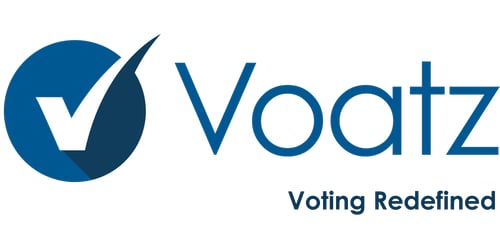Running votes on the blockchain is an apparently-obvious killer use case for blockchains that advocates will bring up at the drop of a hat.
There appear to be no existing writeups of how this is supposed to work in detail, of what actually existing problems in voting this is supposed to solve, nor of what blockchains in particular bring to the party.
(Ask an advocate for an existing writeup of how this use case would work, and in my experience they’ll start trying to make up answers off the top of their head.)
So let’s just run an ordinary vote, and shove “blockchains” in there somewhere!
The West Virginia blockchain voting pilot — Pilot Project: Secure Military Mobile Voting Solution — is an excellent example. All it does is record the votes in a private blockchain, used as a database.
This was a pilot program to allow absentee ballots for military people who were eligible to vote in Harrison and Monongalia Counties, but were stationed overseas. The idea was to provide greater confidentiality, integrity and availability over using post, fax or email.
They used Voatz — a private company running Hyperledger on four nodes. So, like the World Food Programme example — it’s just a single-user clustered database.
How it works, per West Virginia Secretary of State’s office Deputy Legal Counsel Donald Kersey:
Voatz incorporates a series of various security procedures eligible voters must go through before they can even get the chance to cast a vote.
“You take a photo of your photo ID and then they take a selfie of themselves,” Kersey explained. “Facial recognition software is then deployed to compare the photo on the ID and the photo of the person who took the picture. Only if that’s verified will you be registered to use the application and receive a ballot. Once you’re in, it matches you in the application to you in the voter registration.”
The process then involves further verification from the county clerk, staff from the Secretary of State’s office and staff assigned to the effort at Voatz.
“Then you receive your ballot and use Voatz to make selections by clicking on your screen,” Kersey explained. “And when you’re done, you click the vote button.”
Kersey said once the person clicks the vote button, a third and final layer of biometric security is triggered involving either a second “selfie photo” or thumbprint.
“Once it’s good, the vote goes into a digital lockbox. This is where Blockchain comes in.”
That is — all the hard work is identifying the voter. Then they put the vote into Voatz’ private database, and take at face value the hype claims of anything labeled “blockchain” being a tamper-proof “digital lockbox” — even as it’s under Voatz’ complete control.
Though you can view the block explorer!
Maybe the biometric identification could turn out to be interesting or useful — though testing it against already completely-known members of the military is definitely easy mode.
The only sense in which this is a win for blockchains for voting is that it gets the word “blockchain” into the press, and gives the starting signal for public policy bloviation.
The main function of this sort of trial is as marketing for companies selling “blockchain” as a slow back-end database.
Update, August 2018: West Virginia evidently liked the trial and want to use this system for the November mid-term elections. This is proving somewhat controversial.
I’ve written a follow-up post — the slapstick comedy horror saga of a plucky little blockchain startup who aren’t quite ready for every state-level hacker in the world, or more than eleven voters.
(well, that was unexpected. Hello, new readers! While you’re here, check out the news blog, the book and sponsoring the site!)
Your subscriptions keep this site going. Sign up today!


Inspired by this Twitter thread by Sarah Jamie Lewis.
Kanton Zug in Switzerland will have a trial vote, blockchain based. It’s more advanced than this State of West Virginia trial as they already have an implementation for a digital ID based on uPort and supported by the local authorities. In 6 months, 200 people registered. YEs, this is a small Kanton (120000 inhabitants) and we can question availability etc….but at least, technologically, it’s clearly steps ahead and addresses some of your concerns.
See https://www.swissinfo.ch/eng/system-test_-crypto-valley–zug-to-trial-blockchain-voting/44177440
About the digital ID: https://medium.com/uport/zug-id-exploring-the-first-publicly-verified-blockchain-identity-38bd0ee3702
cheers – it’s still not clear from that what the blockchain brings to the party here. Running a vote for literally 50 people is not a problem that needed solving.
Tamper proofing voting machines are possible if there is decentralization and distributed verification components. Also, it has to be peer to peer nodes, and not just 4 centrally controlled nodes.
Still after that worked-out plan, not just idle blog comments or tweets on the spot. Do you know of any already-existing writeups, that show what blockchain in particular brings to the table?
https://twitter.com/GossiTheDog/status/1026603800365330432
Thread by Kevin Beaumont, also with good analysis of the details.
And yes, four nodes in the same RFC1918 subnet run by the same organization make an expensive RAID controller, not an actually secure blockchain, even if they’re running on protected hardware somewhere and not just Azure.
yep, that thread gets its own section in the followup post 😀
tl;dr Voatz is a thorougly blockchain enterprise